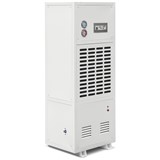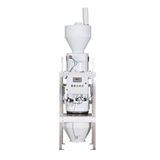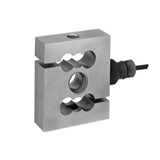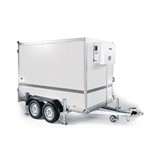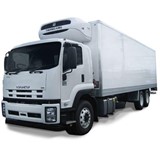The following do's and don'ts of refrigerated transport will help keep drivers productive and waste to a minimum.
Carry a battery-operated leaf blower
Refrigerated trailers need to be cleaned after each load. Relying on a broom can cut into production time and sweeping after unloading the product can exacerbate back issues with some drivers.
A leaf blower can quickly dispatch of waste, is more effective on shelves, and is easier to handle than a broom.
Don't overlook training
It is never safe to assume a driver knows how to properly operate the reefer unit. Take the time to perform proper training, as one mistake will cost significantly more than the time to work with the driver.
Based on the cargo and external temperatures, make sure the driver knows if the unit should be on continuous run or start/stop.
Ensure proper airflow
Debris on the floor inhibits proper airflow and can prevent consistent temperatures in the reefer. Likewise, adequate space is needed overhead and on the sides of the load. Double-faced pallets should be used and cargo shouldn't be packed too close to the ceiling.
Don't lose sight of your weight
Clearly, a refrigerated trailer weighs more than a dry unit. When dispatched to pick up a cold load, the weight will be taken into account. However, if being tasked with a dry load, the cargo plus the trailer tonnage could surpass weight limits.
The other weight issue to consider is with ice. A freezer van needs to be kept free of ice build-up, as it can quickly eat into weight limits and diesel use.
Keep tools on board
Cooler issues are an obvious concern with cold transport. Any mechanical failure puts the entire load in jeopardy. Not every driver has keen mechanical skills, but they should at least have the tools to conduct minor repairs if needed.
Don't be penny wise, pound foolish

There is a strong temptation to have the cooler operate on a run/stop basis. It saves fuel and reduces noise, particularly when the driver is stopped and sleeping close to the refrigeration unit. While this mode is fine for hearty loads, temperature-sensitive cargo is at risk of spoiling when not in continuous mode.
Produce is particularly vulnerable to loss. It generates heat while it ripens so it requires continuous airflow.
Don't ignore paperwork
Be sure to communicate paperwork requirements with customers well in advance. Driver delays waiting for paperwork cut into productivity, which is a big red flag in this industry.
Keep a refrigeration chart
Preferred storage temperatures vary greatly with produce and other perishable items. A reference chart will show the preferred temperature, humidity, and ventilation settings.
Remember to pre-cool
The trailer and the cargo should be cooled to proper temperature prior to loading. This will remove residual heat from both sources and help avoid waste.
Turning the system off while loading is also usually advisable; a running unit will pull heat and humidity into the trailer.


